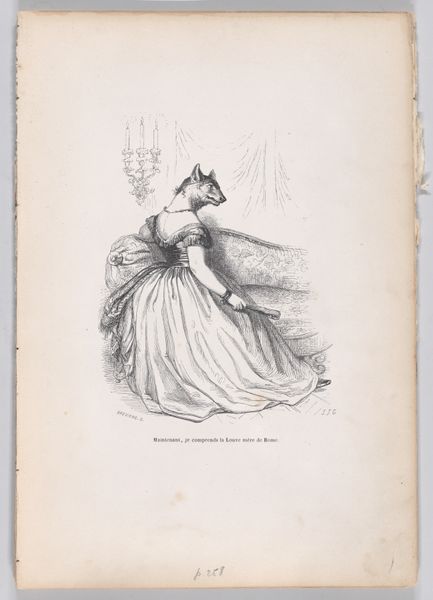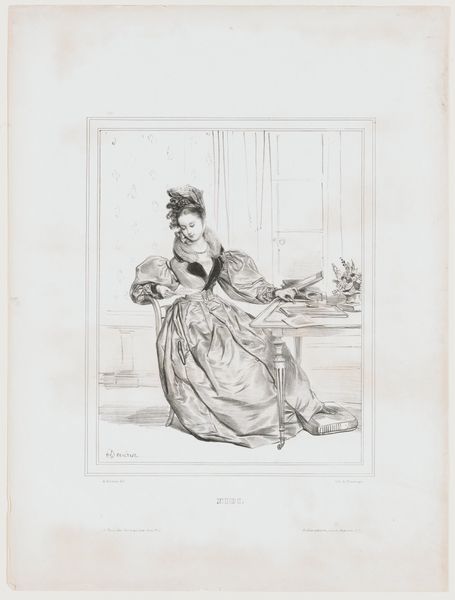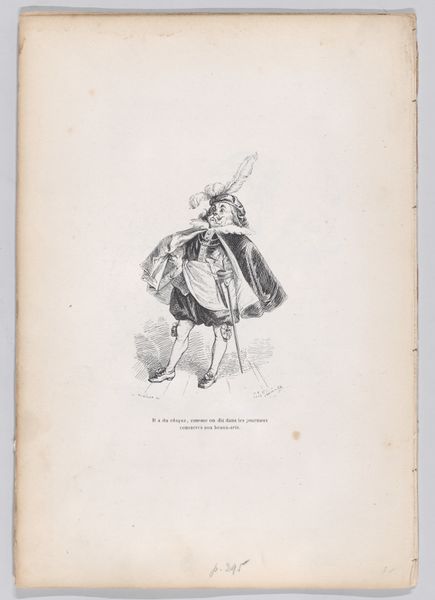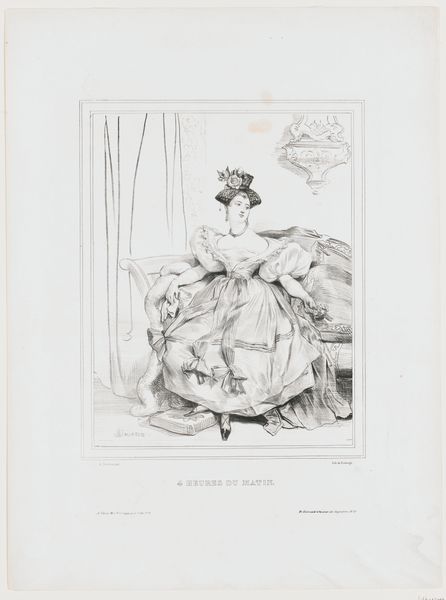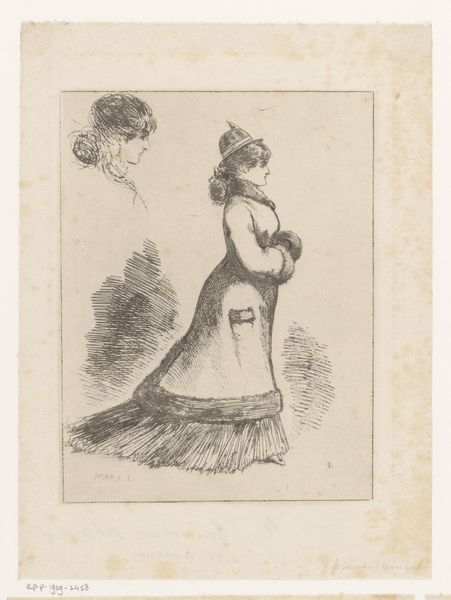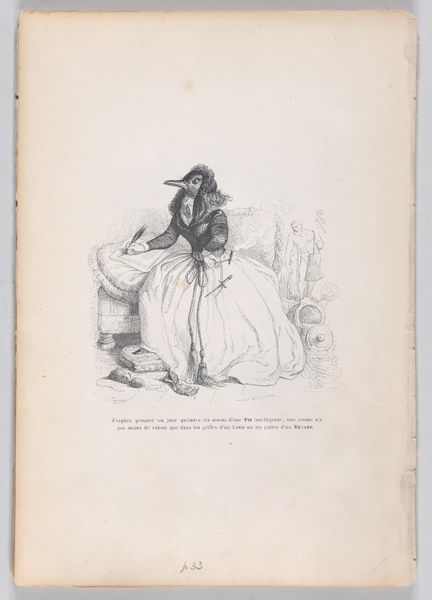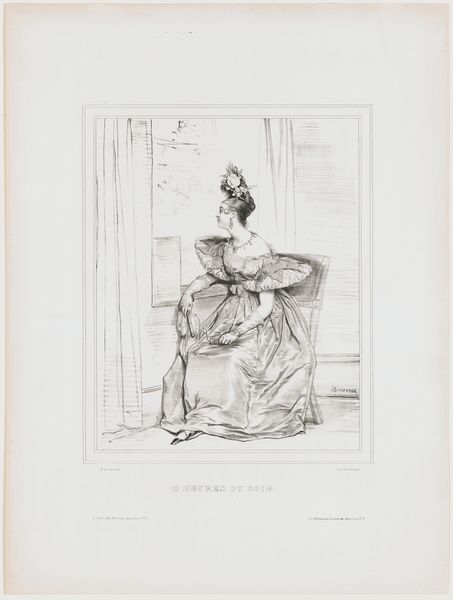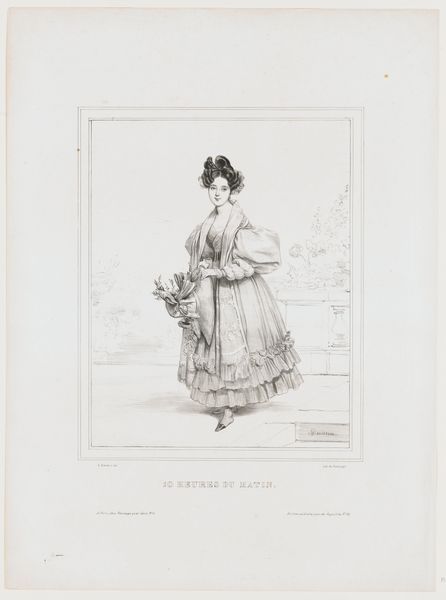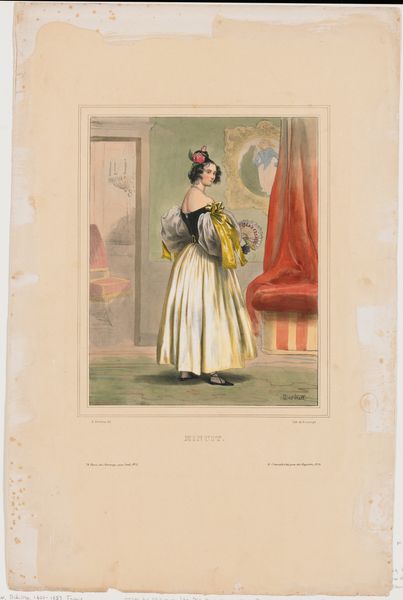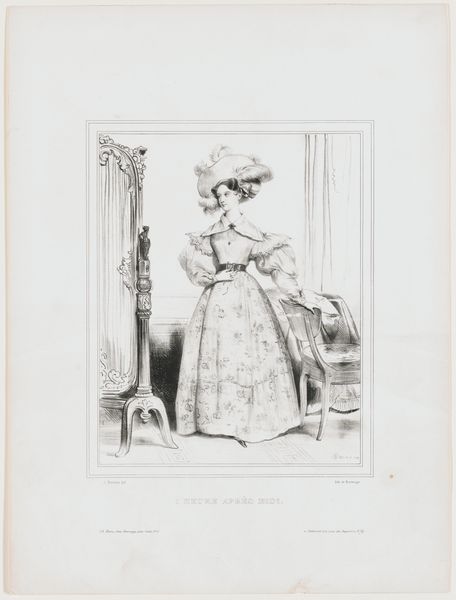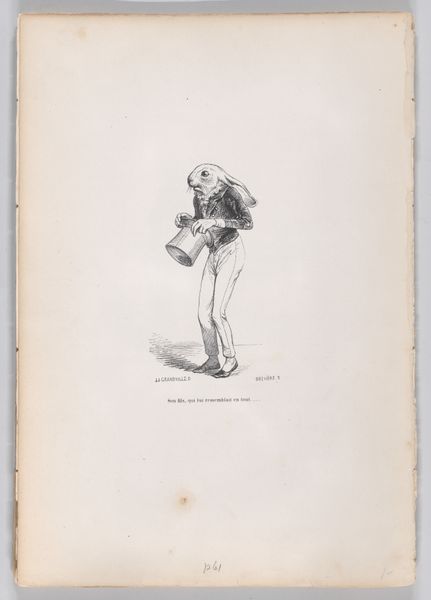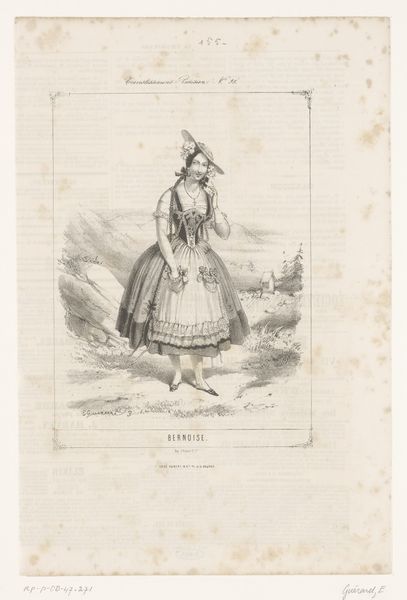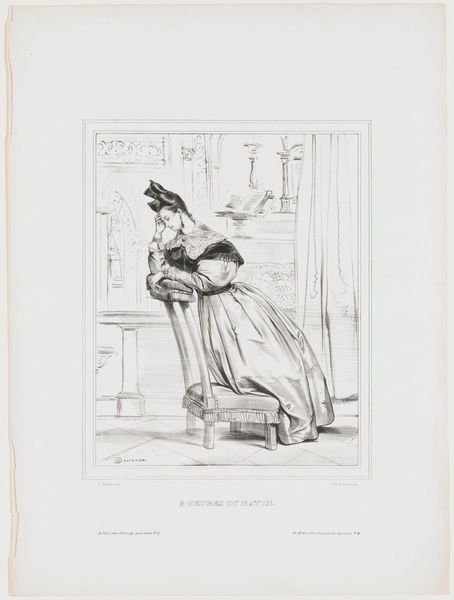
"And yet we add that, outside the theater, these animals are even more ugly" from Scenes from the Private and Public Life of Animals 1832 - 1852
0:00
0:00
drawing, lithograph, print
#
drawing
#
allegory
#
narrative-art
#
lithograph
# print
#
caricature
#
figuration
#
romanticism
#
genre-painting
Dimensions: Sheet: 10 5/16 × 7 3/16 in. (26.2 × 18.3 cm)
Copyright: Public Domain
Editor: This lithograph from J.J. Grandville, sometime between 1832 and 1852, is called "And yet we add that, outside the theater, these animals are even more ugly" from Scenes from the Private and Public Life of Animals. It's got a very satirical feel, with these animals dressed in human clothes attending the theatre. What exactly is Grandville trying to say with this piece? Curator: It's a fascinating commentary on the social norms of 19th-century French society, actually. Grandville was known for his political and social caricatures. Have you considered the context of the July Monarchy when thinking about this piece? Editor: Not really. I mostly just see animals in clothes. Curator: Think about the rise of the bourgeoisie during that period. Grandville uses animal heads on human bodies as a way to critique the vanity, the social climbing, and the perceived moral failings of this new upper class. The theatre itself was a crucial social space, a place to be seen, to perform one's status. Editor: So, by depicting animals, he's stripping away the pretense and showing their "true" nature? Curator: Precisely. And the title – “even more ugly outside the theater” – suggests that the artificiality and performance of social life only serve to mask a deeper ugliness. The 'ugliness' here can be understood as moral or spiritual bankruptcy. Consider how powerful the *idea* of theatre and performance was for satirists during the 1800s. The 'stage' didn't necessarily require curtains and sets! Editor: That makes a lot of sense. It's more than just funny animals; it's a criticism of social behavior. Curator: Exactly. Artworks like this challenge us to reflect on the role of institutions in shaping how we understand one another, or even the performance of identity today. Editor: Wow, I’ll never look at it the same way again. Thanks! Curator: My pleasure! It's amazing how much historical context can open up a seemingly simple image.
Comments
No comments
Be the first to comment and join the conversation on the ultimate creative platform.
